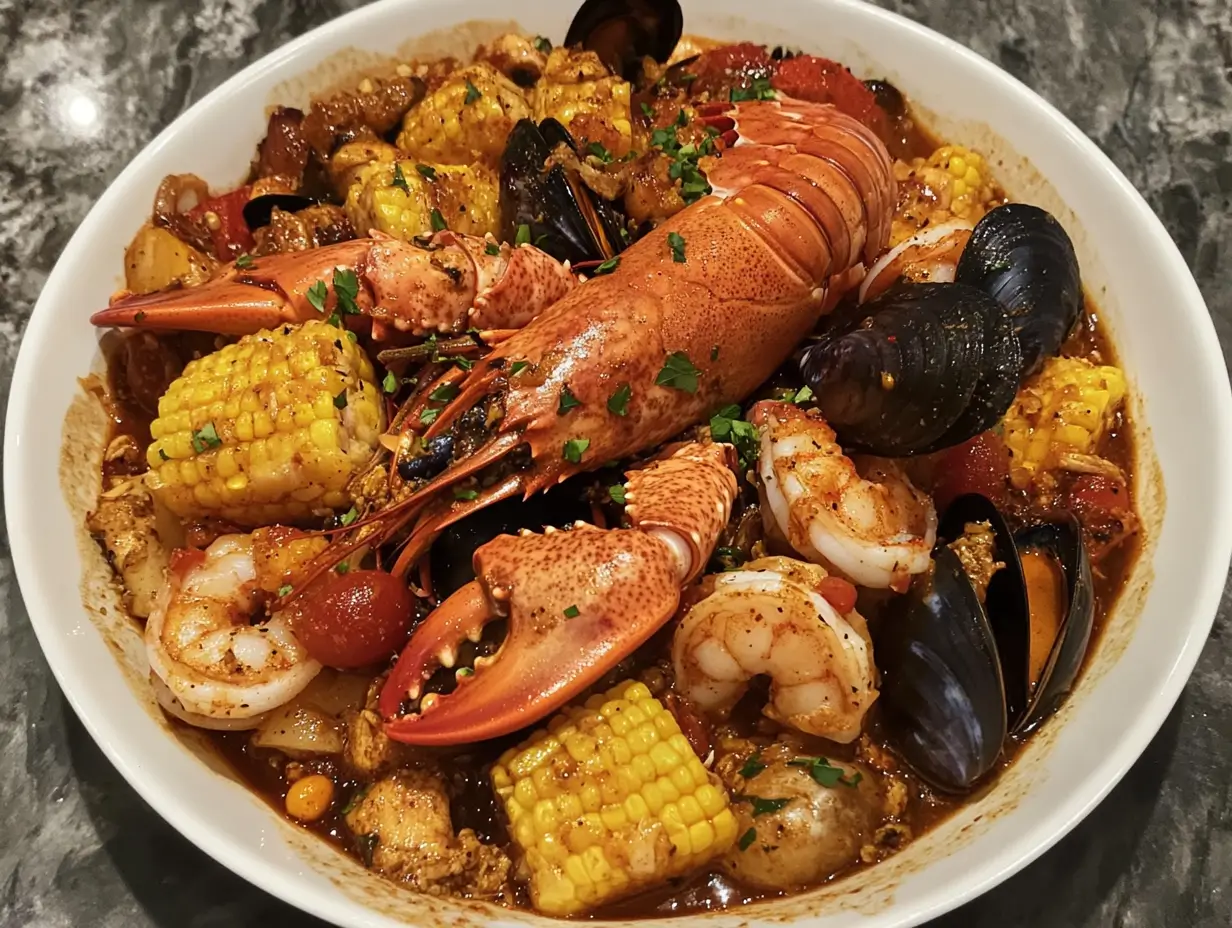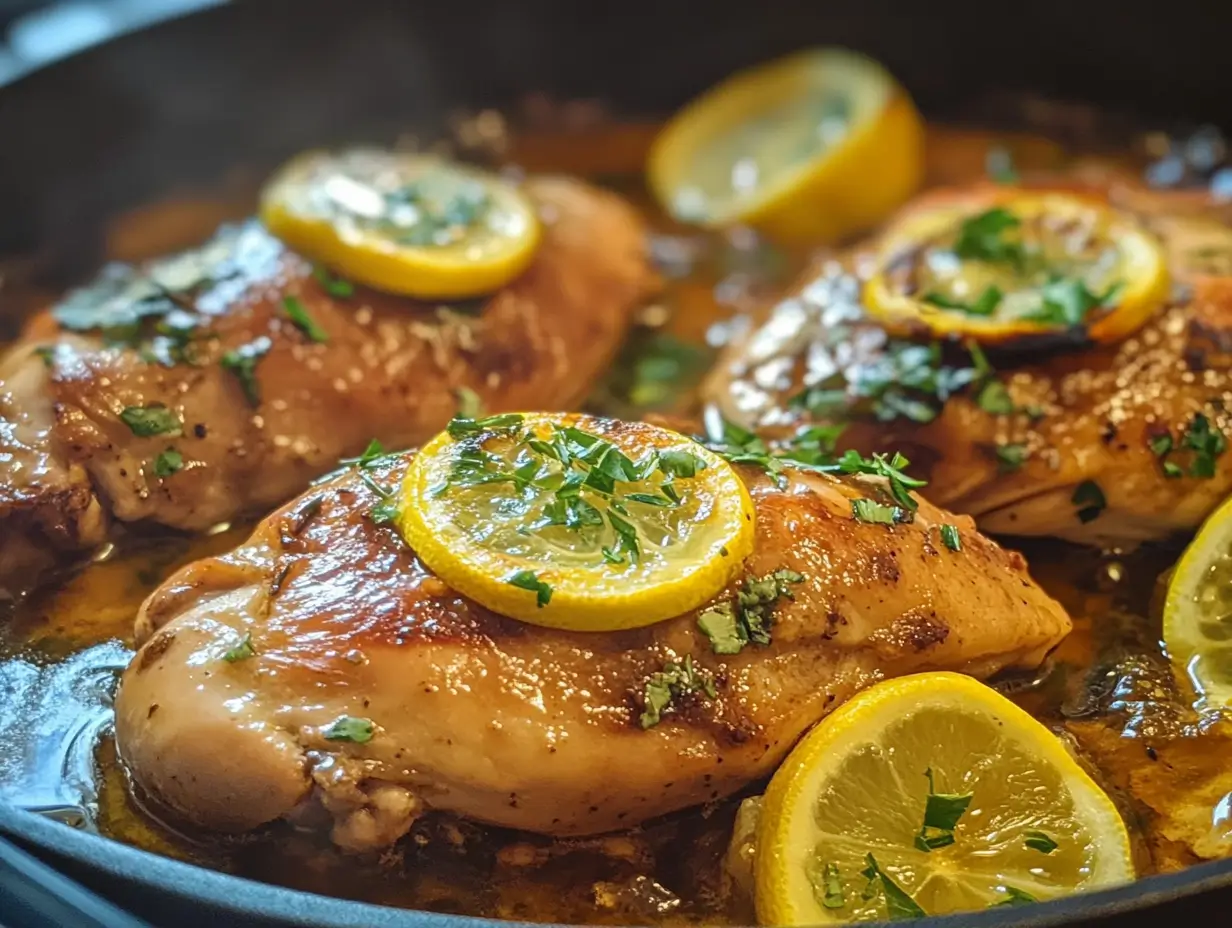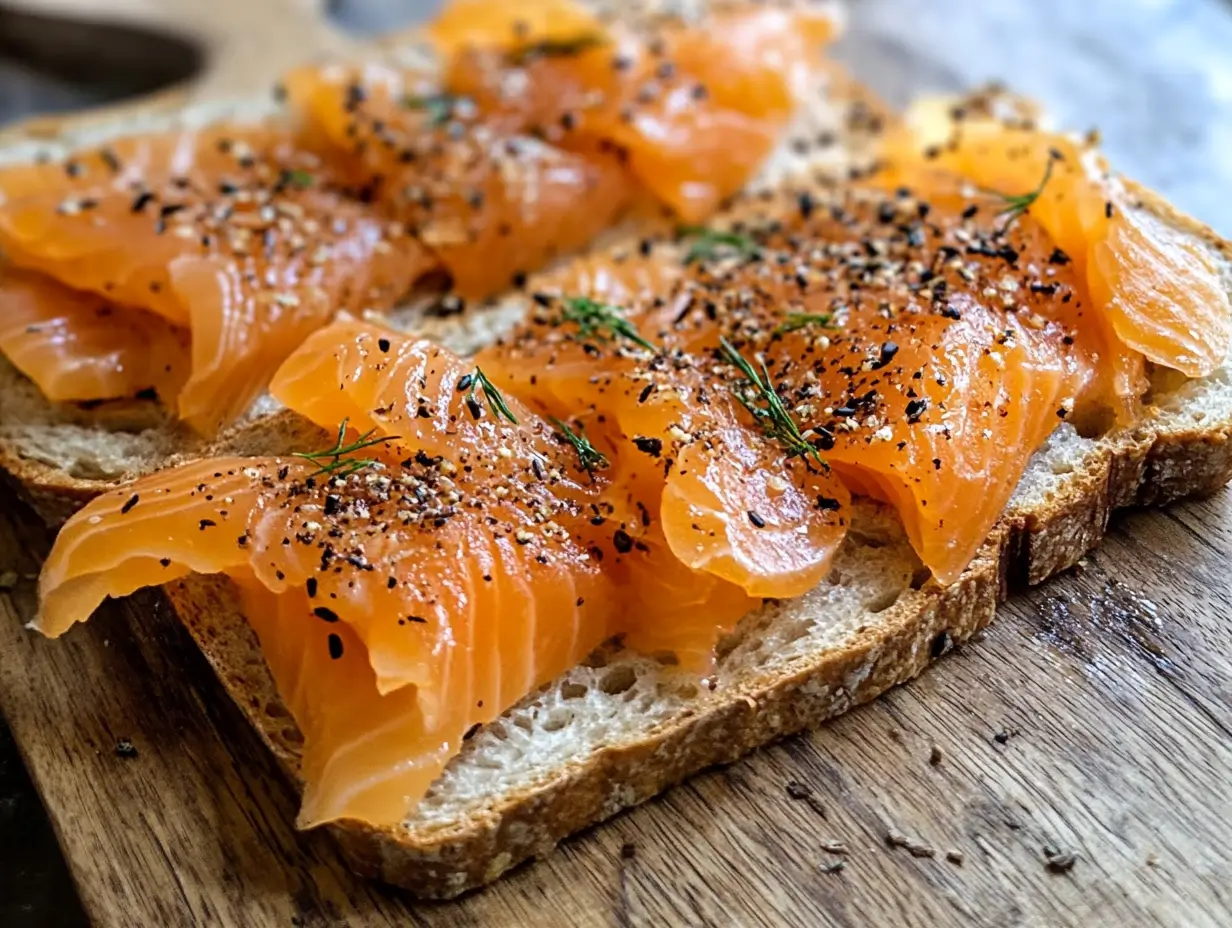The Gluten Free Pasta Recipe That Fooled Italian Chefs

Imagine a moment when gluten free pasta goes from a dietary need to a culinary wonder. It makes even the most traditional Italian chefs do a double take. For years, those with gluten sensitivities have faced pasta that feels like cardboard and tastes like disappointment. But what if I told you there’s a gluten free pasta recipe that could change everything?
The world of gluten free pasta has seen a big leap forward. Now, 13 brands compete, offering everything from chickpea to red lentil bases. We’re no longer stuck with bland, texture-less alternatives. Our groundbreaking gluten free pasta recipe bridges the gap between dietary restriction and gourmet dining.
Gluten free pasta isn’t just a trend—it’s a lifeline for millions with celiac disease and gluten sensitivities. The days of compromising flavor and texture are over. This recipe promises restaurant-quality pasta that will make you forget you’re eating gluten free.
Key Takeaways
- Discover a gluten free pasta recipe that rivals traditional wheat-based pasta
- Explore the diverse world of alternative flour blends
- Learn how to achieve perfect pasta texture without gluten
- Understand the nutritional benefits of legume-based pastas
- Master cooking techniques for ideal gluten free pasta
Understanding the Art of Gluten Free Pasta Making
Making gluten free pasta is more than just using different flour. It’s a mix of science, creativity, and picking the right ingredients.
To make great gluten free noodles, you first need to know the special challenges of gluten-free cooking. Unlike regular pasta, you must mix different flours to get the right taste and texture.
The Science of Flour Blends
Gluten-free flour blends are key to making good pasta. Here’s what you need to think about for the perfect mix:
- Blend several gluten-free flours for the best texture
- Start with rice flour, corn flour, and quinoa flour
- Add xanthan gum to help the dough stick together
Key Ingredients for Perfect Texture
Your gluten free noodle recipe needs special ingredients for a texture like traditional pasta:
- Almond flour adds protein
- Tapioca starch makes the pasta stretchy
- Eggs or egg substitutes help it stick together
- Olive oil adds moisture and flexibility
Common Pitfalls to Avoid
When making gluten-free pasta, avoid these common mistakes:
- Don’t overwork the dough or it will be tough
- Not enough liquid can make the pasta dry and crumbly
- Without binding agents, the noodles will be fragile
With practice and patience, you’ll get the hang of making delicious gluten-free pasta that’s just as good as the traditional kind.
Essential Equipment for Creating Restaurant-Quality Pasta
To make restaurant-quality gluten free fresh pasta, you need special equipment. This turns your kitchen into a pro pasta workshop. The right tools can elevate your pasta from good to exceptional.
Here are the key tools you should look for:
- Manual Pasta Machines
- Marcato Atlas 150: Offers 10 rolling settings
- Imperia Manual Pasta Maker: Features 6 rolling settings
- Stand Mixer Attachments
- KitchenAid Pasta Roller: Includes 8 thickness settings
- GVODE Attachment: Provides consistent dough rolling
- Electric Pasta Makers
- Philips Artisan: Professional-grade electric model
Investing in quality equipment means better precision and consistency. The Marcato Atlas is great for making dough as thin as paper (0.5 millimeters) and for clean cuts. Most pro-grade machines make pasta faster, cutting time in half compared to manual methods.
Prices vary, but expect to spend $80-$350 for good gluten free pasta equipment. The KitchenAid attachment set, priced around $176, is versatile for home chefs wanting top-notch results.
Pro tip: Choose a machine with multiple thickness settings to create various pasta styles effortlessly.
The Ultimate Gluten Free Pasta Recipe
Making the perfect gluten free pasta recipe needs precision and quality ingredients. Your homemade pasta will turn into a delicious dish that’s as good as traditional pasta.
Base Ingredients and Their Purpose
Your gluten free pasta recipe needs special ingredients that work well together. Here’s what you’ll need:
- 2 cups gluten-free all-purpose flour (292g)
- ½ cup + 2 tablespoons almond flour (58g)
- 3 large eggs
- 2 teaspoons xanthan gum
- 1 tablespoon extra-virgin olive oil
Step-by-Step Mixing Process
Mixing your gluten free pasta recipe needs careful attention. Start by making a well in your flour blend. Then, add eggs and olive oil slowly. The dough should be clumpy but not too wet.
| Ingredient | Protein Content | Function |
|---|---|---|
| Gluten-Free Flour | 5.4% – 7.6% | Base structure |
| Eggs | 6g per egg | Binding agent |
| Xanthan Gum | N/A | Elasticity replacement |
Kneading and Resting Techniques
Knead your gluten free pasta dough for 2-3 minutes. Resting is crucial – let the dough rest at room temperature for up to 2 hours. This enhances flavor and texture.
Your gluten free pasta recipe makes 4 generous servings. Each serving has about 249 calories and 10g of protein. Enjoy your homemade pasta!
Mastering the Perfect Pasta Texture
Getting the right texture for gluten free noodles is all about precision. Unlike regular pasta, gluten-free noodles need extra care to get that perfect al dente feel.
The secret to great gluten free pasta texture is in the ingredients and techniques. Your flour mix is key to the final result.
- Use a mix of gluten free flour
- Add xanthan gum to boost elasticity
- Control how much water you use
- Watch how long you knead and rest the dough
When making your gluten free noodle recipe, texture is an art. Use one egg for every 100 grams of gluten-free flour. This helps the ingredients stick together and makes the dough easy to work with.
“Texture is the silent storyteller of your pasta’s quality” – Culinary Experts
| Flour Type | Texture Contribution | Protein Content |
|---|---|---|
| Chickpea Flour | Rich, Substantial | High |
| Sorghum Flour | Smooth, Mild | Medium |
| Teff Flour | Nutty, Dense | High |
Cooking times are crucial for the perfect gluten free pasta texture. They usually take 2-3 minutes to cook. Make sure to check them often to avoid mushiness. Add plenty of salt to the water and taste a piece to see if it’s done.
Drying and Storing Your Homemade Pasta
Making gluten free fresh pasta is more than just cooking. It’s about drying and storing it right to keep its taste and quality. Learning the best ways to do this will help you enjoy your pasta even more later.
Gluten free pasta needs extra care because it dries differently. It’s important to manage moisture well during drying.
Optimal Drying Techniques
- Spread pasta on clean, lightly floured surfaces
- Use pasta drying racks for even air circulation
- Maintain room temperature between 68-72°F
- Avoid direct sunlight or humid environments
Storage Solutions for Maximum Freshness
Storing your gluten free fresh pasta right is key to keeping it fresh. Here’s a guide on how to store it:
| Storage Method | Duration | Best For |
|---|---|---|
| Refrigerated (Airtight Container) | 2-3 days | Fresh, uncooked pasta |
| Freezer Storage | Up to 3 months | Long-term preservation |
| Room Temperature | 4-5 hours | Short-term storage |
Pro tip: Freezing your pasta? Spread it on a baking sheet for 25 minutes first. Then put it in a freezer bag. This stops it from sticking and keeps it fresh.
Remember, patience is key in the pasta-making process. Allow your pasta to dry completely before storing to prevent moisture buildup and potential spoilage.
Cooking Techniques for Al Dente Results
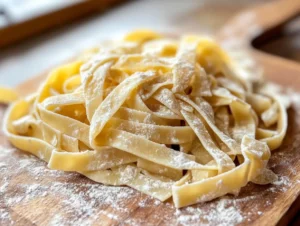
Cooking gluten free egg free pasta needs precision and attention. The pasta’s texture depends on special cooking techniques. These are different from traditional wheat pasta.
Cooking times for gluten free pasta are surprisingly quick. Most types are al dente in just 3-5 minutes. Wheat pasta takes 8-10 minutes. Stirring often prevents sticking and ensures even cooking.
- Check pasta every 30 seconds during cooking
- Use plenty of salted water
- Test doneness by tasting a small piece
- Drain immediately when reaching desired texture
The secret to perfect gluten free egg free pasta is to watch it closely. Different shapes need slightly different cooking times:
| Pasta Shape | Cooking Time |
|---|---|
| Thin Noodles | 2-3 minutes |
| Medium Shapes | 4-5 minutes |
| Thick Shapes | 5-6 minutes |
Pro tip: Remove pasta from heat just before it reaches your ideal tenderness. Residual heat will continue cooking the pasta, preventing overcooking.
Remember, gluten free pasta can become mushy fast. Drain and serve right away for the best texture and flavor in your homemade dish.
Sauce Pairings That Complement Gluten Free Pasta
Choosing the right sauce can make your gluten free pasta recipe stand out. The right sauce brings out the best in gluten-free pasta, making your meal unforgettable.
When making your gluten free pasta recipe, it’s important to know which sauces go well with it. Different pasta shapes need specific sauces to get the best flavor and texture.
Classic Italian Sauce Adaptations
Italian sauces can be made gluten-free with a few tweaks. Here are some classic pairings:
- Marinara sauce with long pasta like spaghetti
- Aglio e olio with linguine
- Pesto with rotini or fusilli
Modern Fusion Options
Try new sauce combinations to take your gluten free pasta recipe to the next level:
| Pasta Shape | Sauce Recommendation | Flavor Profile |
|---|---|---|
| Penne | Roasted vegetable cream sauce | Creamy, robust |
| Angel Hair | Lemon-herb olive oil | Light, refreshing |
| Rigatoni | Spicy arrabbiata | Bold, intense |
The secret to a great gluten free pasta recipe is finding the right balance. Try different sauces and pasta shapes to find your favorite!
Tips from Professional Chefs for Perfect Results
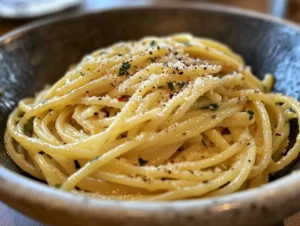
Creating the perfect gluten free noodle recipe needs tips from top chefs. These expert tips will boost your pasta-making skills. You’ll make dishes as good as those in restaurants, right in your kitchen.
Professional chefs share key techniques for making great gluten free pasta:
- Use a carefully balanced flour blend instead of single-grain alternatives
- Maintain precise hydration levels in your dough
- Allow sufficient resting time for optimal texture
The secret to amazing gluten free noodles is knowing about flour. Semolina flour gives structure, while 00 flour adds a soft touch. Mixing them right can make your pasta much better.
| Technique | Professional Recommendation |
|---|---|
| Dough Resting | Minimum 30 minutes for water-based dough |
| Kneading Time | 10 minutes by hand, 5 minutes with stand mixer |
| Pasta Thickness | Roll until almost translucent for best results |
When cooking gluten free pasta, start checking for doneness 2-3 minutes before the package says. This avoids mushy noodles and gives you perfect al dente texture every time.
The key to amazing gluten free pasta is patience and precision in every step of the process.
Salt is your flavor ally – use 2-3 heaping teaspoons when cooking. It enhances taste and prevents blandness. Your gluten free noodle recipe will thank you for this professional touch.
Conclusion: Embracing the World of Gluten Free Pasta
Your journey into gluten free fresh pasta has opened up a world of culinary possibilities. By mastering the techniques and understanding the unique properties of alternative flours, you can create delicious pasta. This rivals traditional wheat-based recipes. The key is experimenting with ingredients like lupin flour, which offers incredible nutritional benefits with only 5 grams of net carbs per serving.
The market for gluten free fresh pasta continues to expand, offering more options than ever before. Brands like Banza, Barilla, and Tinkyada show how versatile and accessible these alternatives have become. Your newfound skills can help you craft restaurant-quality meals that cater to various dietary needs while maintaining exceptional taste and texture.
Remember that creating perfect gluten free pasta is an art form that requires practice and patience. Invest in quality tools like a kitchen scale and explore different shaping methods. Whether you choose to use a pasta press or hand-roll your noodles, each technique brings you closer to mastering this culinary craft. Your dedication can transform dietary restrictions into a delightful cooking adventure.
As you continue to explore gluten free pasta, you’ll discover a world of flavors and techniques that make every meal an exciting experience. Embrace the creativity, enjoy the process, and savor the delicious results of your homemade gluten free fresh pasta.
FAQ
Is it really possible to make gluten-free pasta that tastes authentic?
What are the best gluten-free flours for making pasta?
Do I need special equipment to make gluten-free pasta?
How do I prevent my gluten-free pasta from becoming mushy?
Can I make gluten-free pasta without eggs?
How long can I store homemade gluten-free pasta?
Is homemade gluten-free pasta healthier than store-bought?
What sauces work best with gluten-free pasta?
Can I make different pasta shapes with gluten-free dough?
Is gluten-free pasta suitable for people with other dietary restrictions?

Gluten Free Pasta Recipe
Course: Lunch4
servings30
minutes5
minutes250
kcalA restaurant-quality pasta that rivals traditional wheat-based versions – so good it fooled Italian chefs!
Ingredients
2 cups gluten-free all-purpose flour (292g)
½ cup + 2 tablespoons almond flour (58g)
3 large eggs
2 teaspoons xanthan gum
1 tablespoon extra-virgin olive oil
Directions
- Make a well in the center of your combined flours and xanthan gum
- Add eggs and olive oil to the well
- Mix slowly until the dough becomes clumpy but not too wet
- Knead the dough for 2-3 minutes
- Let the dough rest at room temperature for up to 2 hours
- Roll out the dough using a pasta machine or by hand
- Cut into your desired pasta shapes
- Cook in salted water for 2-3 minutes until al dente
- Check pasta frequently during cooking to avoid mushiness
- Drain immediately when ready and serve with your favorite sauce
Notes
- Perfect for those with celiac disease or gluten sensitivities, this pasta offers the authentic texture and flavor of traditional pasta without the gluten. Each serving provides approximately 10g of protein.
Did You Try The Recipe ?
There are no reviews yet. Be the first one to write one.



